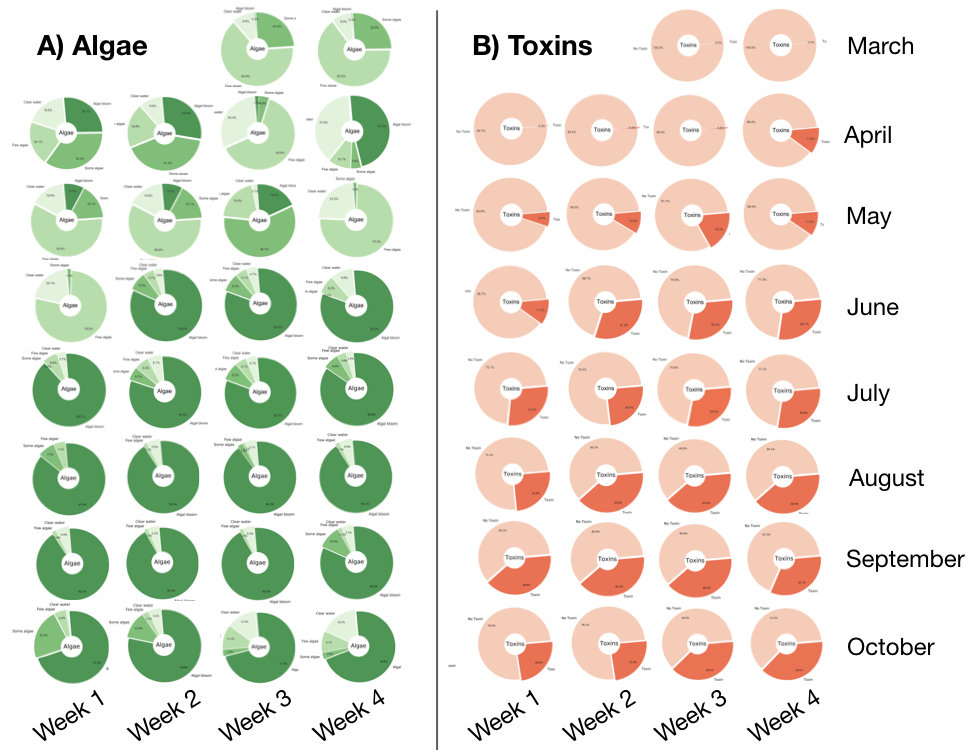End of season report
The harmful algal bloom season for 2019 is now over. The winter weather means that it is too cold and there is too little sunlight for harmful algae to bloom. Here’s a lookback at the 2019 HAB season:

These are the figures that we created every week over the last eight months, and you can see the progression of the season through the increase in dark greens (i.e. high algal bloom likelihoods) and dark oranges (i.e. high toxin likelihoods). The 2019 HAB season started around June, and actually had an elevated and prolonged season relative to 2018, with toxins and algal blooms well into October. This can be attributed to the relatively mild temperatures this fall. Here is a figure comparing the 2018 and 2019 HAB seasons:

In the figure above you can see the algal concentrations in Detroit Lake in 2019 compared to 2018. Algal concentrations on the vertical axis are expressed in terms of log(biovolume+1). What we see is that while 2018 was a difficult year for HABs, 2019 was actually worse! Indeed, there were more toxic blooms (the size of the circles denotes the toxicity of the water samples collected by the city, with the smallest circles identifying zero toxicity) and algae persisted for much longer (through the end of October).

Our models performed well. In this next figure, we show our predictions in red (with confidence bounds denoted by the dashed lines) overlaid on the empirical data (grey dots) for algal concentrations. We can see that our predictions of algal concentration tracked the observations! However, you can also see that our predictions were almost always lower (the red dots and full line is lower than the grey dots). This is because 2019 had anomalously high levels of algae relative to the past. Our models were trained on historical data and this discrepancy suggests that the past does not always predict the future. This highlights the need for continued monitoring of Detroit Lake so that the latest data can be fed into the models to make the best possible predictions. Data from 10 years ago is becoming less and less relevant.
Thank you for coming to the Detroit Lake HAB prediction blog! Our prediction system will be turned off over the winter, but we are in the process of developing a next generation prediction system for the 2020 HAB season. The biggest challenge that we faced in 2019 was making accurate predictions for toxin concentrations. Currently, relevant data for this problem is very hard to come by, so in the next season we will focus on testing and incorporating new machine learning models as well as models based on expert opinion.
We’ll see you soon!